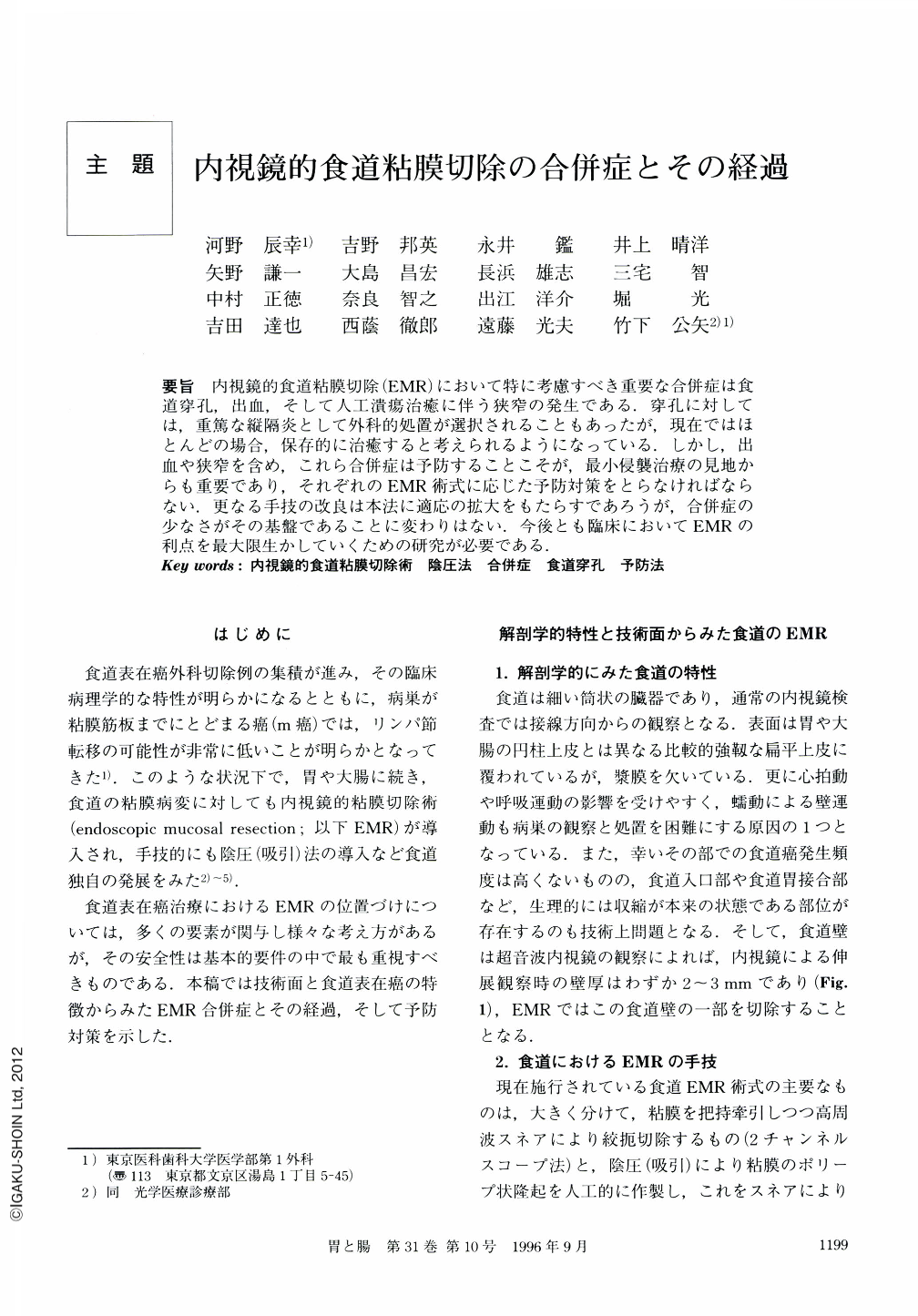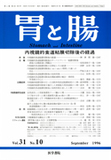Japanese
English
- 有料閲覧
- Abstract 文献概要
- 1ページ目 Look Inside
- サイト内被引用 Cited by
要旨 内視鏡的食道粘膜切除(EMR)において特に考慮すべき重要な合併症は食道穿孔,出血,そして人工潰瘍治癒に伴う狭窄の発生である.穿孔に対しては,重篤な縦隔炎として外科的処置が選択されることもあったが,現在ではほとんどの場合,保存的に治癒すると考えられるようになっている.しかし,出血や狭窄を含め,これら合併症は予防することこそが,最小侵襲治療の見地からも重要であり,それぞれのEMR術式に応じた予防対策をとらなければならない.更なる手技の改良は本法に適応の拡大をもたらすであろうが,合併症の少なさがその基盤であることに変わりはない.今後とも臨床においてEMRの利点を最大限生かしていくための研究が必要である.
The important complications of endoscopic esophageal mucosal resection we should consider are esophageal perforation, bleeding immediately after the mucocal resection, and stenosis due to ulcer healing. We should avoid these serious complications by understanding the mechanism of mucosal resection. However, the adequate judgement of the indication of mucosal resection is also important to prevent serious complications, for example, a lesion which saline injection would not raise is not suitable for mucosal resection.
For an esophageal perforation conservative treatment should be selected, because treatment would be initiated immediately after the perforation and ulcer should be relatively clean. Bleeding right after the mucosal resection should be managed by the endoscopic hemostatic techniques, it would be relatively easy to control by coagulation, compression, local injection of 100% ethanol, clipping or other endoscopic management. Although circumferential mucosal resection may end in a stenosis, it can be prevented either by prophylactic balloon dilatation starting before the formation of stenosis, or by divided mucosal resection.
Almost all complications of endoscopic esophageal mucosal resection can be managed conservatively, and prevention is more important by understanding the detailed mechanism of each technique of mucosal resection and by applying some prophylactic techniques.

Copyright © 1996, Igaku-Shoin Ltd. All rights reserved.


